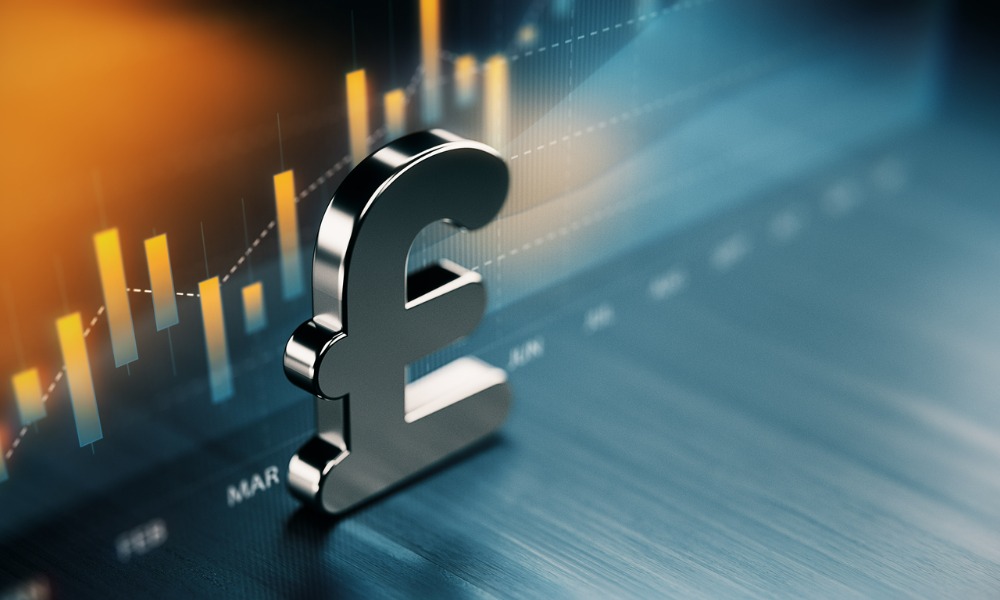Your guide to inflation and how the Bank of England is responding to the current data

UPDATED
The current rate of inflation in the United Kingdom is 2.6% (for the 12 months ending on March 31, 2025, down from 2.8% in February).
What is inflation?
Inflation is when the purchasing power of a currency decreases over time. That declining purchasing power can be reflected in the increase in an average price level of certain goods and services in the economy during the same period.
Usually expressed in percentages, the increase in costs means that the British pound essentially purchases less than it did during previous quarters. On the other hand, deflation occurs when prices decrease and the buying power of money increases.
The goods and services that inflation usually affects are commodities such as fuel, metal, food, grains, as well as utilities such as transportation and electricity, and services including labour, health care, and entertainment.
Generally, the root cause of inflation is a rise in the supply of money. An increase in money supply may occur when authorities print more physical money and give away more, or legally reduce the value of the currency. It can also happen when they buy government bonds from banks on the secondary market after loaning new money as reserve account credits through the banking.
In each of these cases, money loses some of its buying power.
How is it calculated?
Inflation is calculated by measuring the changing value of currency over time, which is reflected in the changing costs of the goods and services you pay for. Calculating inflation rates enables you to see how quickly costs rise over a certain period. Here are three different ways inflation is measured:
By location. While inflation is usually calculated on a country-by-country basis, it can also be done locally by comparing the inflation rate of a city to the inflation rate of the country. Inflation rates can also be compared from one country to another. When comparing inflation rates between countries, however, it is important to be aware of the differences between currencies – for instance, British pounds and US dollars.
Using the price index, or CPI. Consumer Price Index (CPI) data is a commonly used inflation formula. Each country produces its own CPI and, within that context, different regions and cities produce their own data. The CPI will give you an average of a basket of goods that are usually bought by the population. There are also industry-specific indexes – for instance, the CCI (Construction Cost Index) which is used to calculate inflation for a cost estimate on a building project.
By index numbers. The inflation rate is always measured over a specific period, such as decades, years, or months. All you need to calculate inflation is a beginning and ending point within that timeframe. You can then correlate those numbers using the CPI chart you are using, with the results providing you with a picture of how fast costs rose during that time. For instance: to measure inflation for a year, you would take the CPI number from the year prior and the CPI number for the target year. The rate will be how fast costs rose during that period.
How does it impact the economy?
Inflation impacts different economies in several ways – both good and bad. If inflation causes the British pound to drop, it could be a positive for exporters since it makes their goods and services more affordable when compared to the currency of other countries. On the other side of the coin, inflation could negatively impact importers because foreign-made goods and services will become more expensive.
Price increases across the board are generally bad news for buyers, although inflation can sometimes encourage spending if consumers want to buy goods and services before costs go up even more. Those who tend to save, however, might see the value of their savings drop, which limits the ability to invest or spend in the future.
How does the central bank typically respond to inflation?
The Bank of England sets monetary policy with tools that attempt to lower and stabilize inflation. This is largely accomplished through raising or lowering its interest rate, which impacts both the amount of money people receive on their savings and the fees they need to pay on their mortgages and loans.
When the central bank raises interest rates, it generally encourages people to save, meaning that overall, consumers try to spend less.
If people are spending less on goods and services, costs usually start to increase at a slower pace than before, lowering the inflation rate. Conversely, lower interest rates make borrowing money cheaper and the incentive to save is lowered, encouraging people to spend more money, thus increasing the inflation rate.



